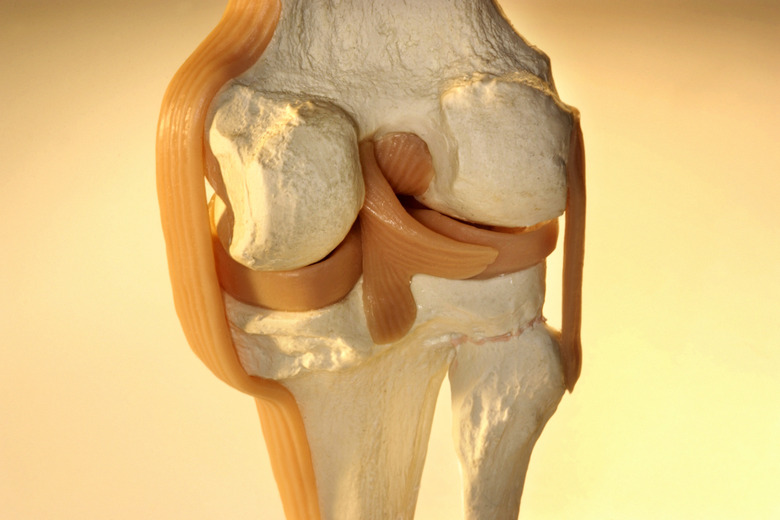What Are The Six Types Of Connective Tissue In Biology?
Connective tissue is one of the four major tissue types in mammals, the others being nervous tissue, muscle, and epithelial, or surface, tissue. Epithelial tissue lies upon connective tissue while muscle and nervous tissue run through it. There are many types of connective tissue in mammals, but they can be classified into three pairs of categories: regular or irregular, special or ordinary, and loose or dense.
Basic Structure
Basic Structure
The cells of connective tissue are not physically connected to one another. Instead, they are suspended in an extracellular matrix. The matrix, in the vast majority of connective tissue types, is made up of elastin and collagen fibers as well as a material called ground substance. In most cases, ground substance is composed of water and sugar-protein complexes called glycosaminoglycans, proteoglycans and glycoproteins. However, some special types of connective tissue do not contain any fibers at all.
Ordinary and Special
Ordinary and Special
The composition of ordinary connective tissue is as described in the most typical case: cells suspended in a matrix of fibers and ground substance. Skin is one such example of ordinary connective tissue. Special connective tissue shares many common traits with ordinary connective tissue but with highly differentiated cell lines suspended within its matrices. Examples of special connective tissue include bone, cartilage, lymphoid tissue and blood. The matrix of blood actually contains no fibers at all, and it's ground substance is the fluid plasma. The ground substance of bone, on the contrary, contains minerals and is solid.
Dense and Loose
Dense and Loose
The density of connective tissue depends on the concentration of its fibrous component. Dense connective tissue can be either higher in collagen or high in elastin and contains a high proportion of fibers compared to cells and ground substance. Examples of collagenous connective tissue include skin, tendons and ligaments. The aorta of the heart is an example of an elastin-containing dense connective tissue. Loose connective tissue, as you may expect, contains a higher proportion of cells and ground substance compared to fibers. Adipose tissue, otherwise known as body fat, is an example of a loose connective tissue.
Regular and Irregular
Regular and Irregular
Connective tissue may be described as regular or irregular depending on the direction of orientation of the fibers. Irregular tissue has fibers extending in multiple directions while regular tissue has fibers running in the same direction. The tendons that attach muscle to other body parts are an example of regular dense connective tissue, because the fibrous portion is oriented the same way. Skin is an example of irregular dense connective tissue because its fibers lie in all directions.
Cite This Article
MLA
Riggio, Gina. "What Are The Six Types Of Connective Tissue In Biology?" sciencing.com, https://www.sciencing.com/six-types-connective-tissue-biology-13370/. 24 April 2017.
APA
Riggio, Gina. (2017, April 24). What Are The Six Types Of Connective Tissue In Biology?. sciencing.com. Retrieved from https://www.sciencing.com/six-types-connective-tissue-biology-13370/
Chicago
Riggio, Gina. What Are The Six Types Of Connective Tissue In Biology? last modified March 24, 2022. https://www.sciencing.com/six-types-connective-tissue-biology-13370/
